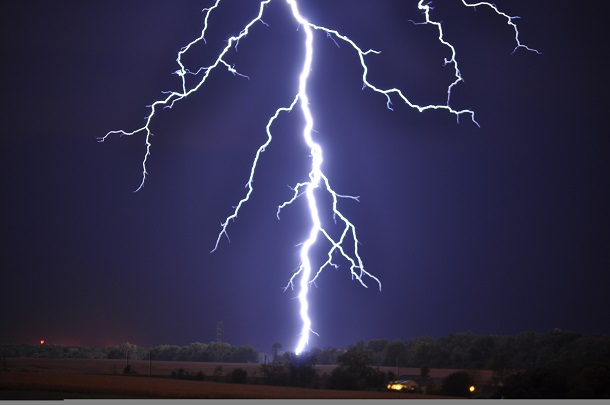I know it’s boring. I’ve tried everything I can to make it interesting. But it’s not. So folks, let’s just get this out of the way. Grounding is the most important part of any outdoor installation and it’s probably the part you didn’t do.
No judgments here, I get it. In fact before I worked at Solid Signal I was pretty lazy about it too. But I’ve heard too many stories of fried equipment and in-home wiring to ignore it. You’ve got to ground your stuff and you have to do it right.
Why grounding is important
Most people have the wrong idea about grounding. They think that if there is a lightning strike, that the skinny little ground wire will take all that electricity and channel it safely into the dirt. Well, that could happen, but let me tell you the real truth.
The real truth is that a lightning strike is about 300,000,000 volts and 30,000 amps, according to the National Weather Service. A skinny little strip of copper isn’t going to contain it.
More importantly, proper grounding helps lightning strikes from happening to your home at all. Lightning happens when a negative electric charge forms in the sky and an equivalent positive charge forms below it. Eventually the buildup of electricity is so great that even the high resistance of the air can’t stop it from flowing. At that time, lightning strikes, releasing all the build-up energy.
Using proper grounding helps prevent really catastrophic lightning strikes by allowing extremely small ones to form. A metal object placed up high, combined with wire and a connection to the planet, allows for very low-resistance pathway, which clears the current building up. By constantly allowing for very low amounts of energy to be dissipated, there isn’t ever a very large amount of energy.
How to ground your roof-mounted antennas
In most cases it’s as easy as running some ground wire from your mast or antenna to a cold water pipe outside. You should always use wire that’s specifically designed for this purpose. I don’t want to give you too much detail because it really depends from city to city. So here’s what you want to do.
First, go down to city hall and get the grounding specs you need. If you can’t get them there, call around to electrical contractors. You’ll find someone willing to talk sooner or later.
Then, check out the selection of grounding supplies at SolidSignal.com. You’ll probably want a grounding block that works for your antenna or dish, some wire, and a ground strap or post depending on what works for your location.
As I said, requirements are going to vary from location to location. Some areas will let you connect straight to an exposed cold water pipe. Others will allow you to connect to a whole home ground source like an electrical panel. (Connecting to a whole-home ground is called bonding.) Some regions make you put in a specific ground rod and give you rules for where it has to go and how deep in it has to be.
No matter how you do it, do it!
You really have to take care of it now that spring storms are coming. So stop putting it off, give up on the excuses and just get it done.
OK, I’m done whining at you. Enjoy the rest of the blog.





